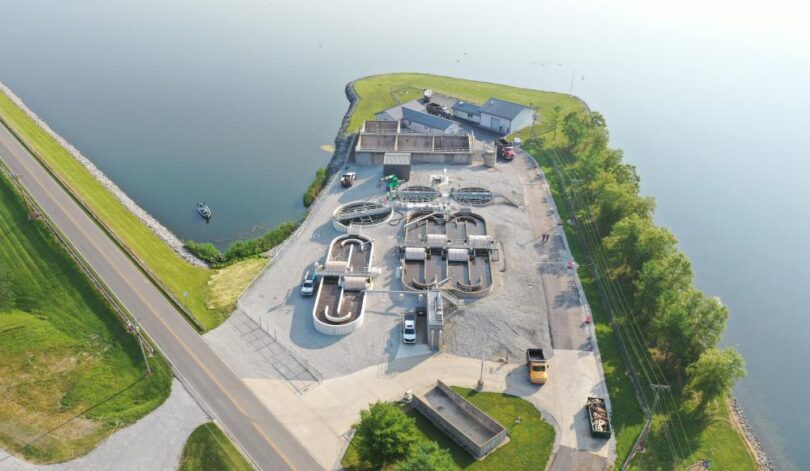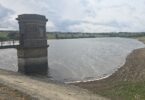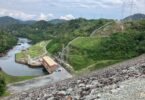Thirty years on since the opening of its first dedicated wastewater treatment plant, The Clear Creek Conservancy District (CCCD) has more than doubled flow capacity at the coveted Heritage Lake in Indiana from 400,000 gallons a day to 900,000 gallons a day.
In expanding the plant, which has added a third oxidation ditch (and rerated the existing two), a third Clarifier and converted the chlorine-contact tank to an Ultraviolet light system, the upgrade has also included intricate refurbishment of around 50% of the inlet equipment, which was found to be in excellent working order, despite being in service for over three decades.
Located just 30 miles west of Indianapolis, surrounded by natural beauty that provides waterside living that is second to none, the 320-acre Heritage Lake certainly appears to have it all for the residents of its 3000 lots (1689 homes). It most certainly has an exemplary wastewater treatment operation that has served this community that began life there in 1972.
As the plant approached 90% of its design capacity due to an inevitable growth in population, CCCD began looking keenly at the measures needed to continue to provide the best possible wastewater treatment service. An early warning sewer-ban letter from the IDEM (Indiana State Department of Environmental Management) had been received as a polite nudge that action would be necessary at some point. Not that this very well-run plant needed any reminder. Wastewater Treatment Operator and Operations Manager, Doug Clodfelter has been at CCCD since 1990, when two small package plants were seriously struggling to contain the increasing amount of flow that was coming in. Danville-based consulting engineers Curry & Associates were appointed to design the first main treatment plant in the early 1990s, with Lakeside Equipment Corporation of Bartlett, Illinois chosen to provide a range of wastewater solutions, including two oxidation ditches.
‘Very favourably in terms of our investment’
“It has proved to be a very wise decision,” said Doug Clodfelter. “Sandblasted, cleaned and repainted, it is incredible to think just how much of this 30-year-old Lakeside equipment is still perfectly good to keep using. Not surprisingly, after three decades, when tanks were drained down and everything was opened up by our contractor, Patterson Horth, plenty of underwater pipes and angle irons (that hold the covers on the rotors) were found to be rusted. Some were still ok, but Lakeside and Ken Sobbe from their equipment representative, FACO, advised us on parts that maybe looked fine, but wouldn’t last as long as we wanted to. This approach to continuing where possible with existing equipment throws up some unknowns. It certainly presents challenges to the supply chain’s planning, but it has all worked out very favourably in terms of our investment, rather than have to buy in everything new.”
He added: “We benefitted from grants during COVID, but for a very small town like ours to pay for the rest without having to borrow any money must be quite rare these days. Our Board does an excellent job managing Clear Creek Conservancy District, and taking care of the budget, especially our Financial Manager, Kathy Deer, who started here roughly when I did 34 years ago. Every month we have a meeting in which everything to do with the wastewater facility is included. We’ve always been very open. When we received our communication from IDEM that we were on an early sewer ban, it was raised at our very next meeting and immediately went into our Heritage Highlights newspaper so that everyone could see what was going on to be aware of possible changes.”
Quality continuity at Heritage Lake continued with Curry & Associates (now part of Fleis & Vandenbrink Engineering) again appointed to design the extended plant, with Lori Young (President) leading the way. It was her father, Robert, who designed the original first main treatment plant over 30 years ago.
‘A very clean and exceptionally well-run facility’
“We looked at several options,” said Lori, “but knew that CCCD had been very happy with the Lakeside rotors, headworks screen and clarifiers that they’d had for a very long time, so we met with FACO’s Ken Sobbe to assess the equipment.”
She added: “Gaining extra years of useful life from a significant amount of equipment that is already 30 years old speaks volumes for its quality, especially in a wastewater environment. And now that stainless steel is in use for the new/refurbished equipment, it will have a much-prolonged life. It will also benefit from the very dedicated management of this plant, which considering its age, is a very clean and exceptionally well-run facility. We’ve all worked well together not to be shortsighted; wanting to keep reliable equipment in place where possible but be realistic and not leave anything to chance. This means that we can be confident of another 20-years-plus service horizon.”
‘Structures had to be built within twenty feet of the water’
Who knows, but even the bald eagles that frequent Heritage Lake might have looked down and thought that the replacement of some equipment and refurbishment of other equipment would make this a challenge for the contractor, Patterson Horth. No contractor wants to lose valuable time on site, so the unknows of waiting to see what could be kept – whilst trying to balance up the supply of replacement parts was not the easiest plan to make during a 10-month period.
Jim Alsatt, Vice President of Patterson Horth commented: “The plant is built on a very small peninsula out in the lake that sticks out like a thumb, so structures had to be built within twenty feet of the water, which of course we took great care to protect. We found more issues than anticipated, but still completed ahead of schedule. The installation of the new oxidation ditch and clarifier all went very smoothly.”
Jay Jeffries, Project Manager at Patterson Horth, added: “This was a learning experience, so there are some things we’d attack a little differently in future,” said. “We all want to make the best out of our site time with no delays, but that said, Clear Creek Conservancy District achieved a very good price ($5M) for the work, and the new-look plant is performing very well indeed.”
Ken Sobbe from FACO continued: “Patterson Horth ensured that there was a smooth transition from the existing to the new equipment, with no major by-passes required. Excavating out the clarifier tank was tricky, but they achieved that with no problems. Despite all the challenges, they did a truly great job; especially in still finishing the work ahead of schedule.”
The number of homes at Heritage Lake now stands at 1,689, with its popularity certain in time to take it up to its predicted maximum capacity of 2,700. The expansion to 900,000 gallons per day can comfortably handle this anticipated rise in population, with the plant (like the lake) held exclusively for its own community, with no outside sewage coming into it.
CCCD’s Doug Clodfelter continued: “Thirty years ago, Curry & Associates had the vision to design the original facility with room to add an extra oxidation ditch, so that was very good thinking for the future. We’ll always continue to learn and look ahead and make sure we’re ready.
“The upgraded Lakeside plant benefits from automatic controls, which we didn’t have before. This allows us to run the plant in storm mode, so in the event of heavy rain, the new system will help prevent us from getting washed out. Now we can control things without always having to be on site or having to turn up in the middle of the night!
“We now have far more in the way of operating options with three ditches. We can very gently increase oxygen levels so that the rotors only need to turn at a very slow speed, which thins out our bug population and saves energy.
“I’ve never seen rotors run so slow before, but its great because unlike before, there’s no foam being created. Previously, half of my tank would often be covered with foam, which looked bad, although all our results were just fine.”
He concluded: “Back in the 1990s, we considered the Lakeside equipment far more forgiving with flows, allowing us to have firm control on handling the strength of the sewage. Over three decades, we’ve had to work on a few gear boxes, but it has an outstanding track record, with the refurbishment of much of it allowing it to continue even further. I liked the equipment over 30 years ago and I like it even more now. Everyone has contributed to ensuring that Heritage Lake continues to be a special place, with an excellent wastewater infrastructure.”








